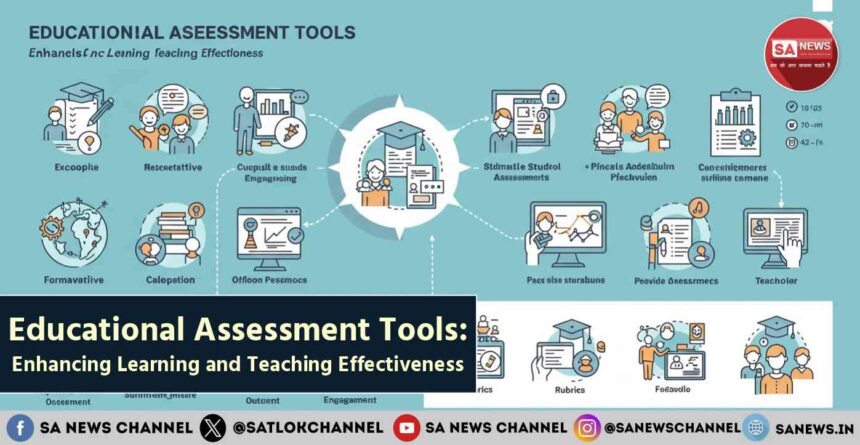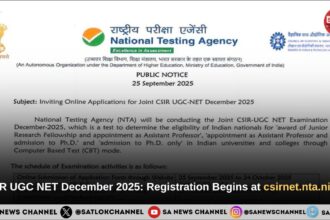Education is the cornerstone of progress, and assessment is the compass that guides it. Whether you’re a teacher in a bustling classroom, an instructional designer crafting online courses, or a policymaker shaping the future of education, the tools you use to assess learning are pivotal. Educational assessment tools help us understand not only what students know but also how they learn, where they excel, and where they struggle. In this blog, we dive deep into the world of educational assessment tools, exploring their types, uses, and how they can revolutionize learning.
- Key Highlights on Educational Assessment Tools
- What Are Educational Assessment Tools?
- Why Are Educational Assessments Important?
- Types of Educational Assessment Tools
- How to Choose the Right Assessment Tool
- Emerging Trends in Educational Assessment
- Challenges in Implementing Assessment Tools
- The Role of Spirituality in Enhancing Educational Assessments
- FAQs on Educational Assessment Tools
- 1. What are educational assessment tools?
- 2. Why are educational assessments important?
- 3. What are standardized tests?
- 4. What is the purpose of formative assessment tools?
- 5. What are diagnostic assessment tools used for?
- 6. How can teachers choose the right assessment tool?
- 7. What are some emerging trends in educational assessment?
- Connect With Us on the Following Social Media Platforms
Key Highlights on Educational Assessment Tools
- Educational assessment tools evaluate learners’ knowledge, skills, and performance, helping to diagnose gaps, measure progress, and inform instructional strategies.
- Assessment is not just about grades but improving the learning process, offering feedback to both students and teachers.
- Standardized tests provide consistent benchmarks but may overlook individual learning differences or cultural contexts.
- Technology-based tools like AI platforms enhance engagement, offer instant feedback, and streamline data analysis.
- Choosing the right assessment tool depends on goals, learner profiles, ease of use, scalability, data insights, and cost.
- Emerging trends include AI-driven adaptive learning, gamification, data analytics, and competency-based assessments, promoting inclusivity and personalized learning.
What Are Educational Assessment Tools?
Educational assessment tools are instruments, platforms, or methodologies designed to evaluate learners’ knowledge, skills, attitudes, or performance. They can range from traditional written tests to cutting-edge AI-driven analytics platforms. These tools aim to:
- Diagnose learning gaps.
- Measure progress over time.
- Inform instructional strategies.
- Provide accountability in education.
Why Are Educational Assessments Important?
Assessment is not just about assigning grades; it’s about understanding and improving the learning process. Key benefits include:
- Feedback for Students and Teachers: Assessments provide insights into student learning, helping teachers adjust their strategies and students identify areas for improvement.
- Goal Setting: Assessment tools help in setting realistic goals based on individual or group performance.
- Equity and Inclusion: When used appropriately, assessments can highlight disparities and help create equitable learning environments.
- Accountability: They hold educators, institutions, and learners accountable for educational outcomes.
Also Read: E-Learning Evolution: Top 10 Online Learning Tools For Students
Types of Educational Assessment Tools
1. Standardized Tests
Standardized tests are uniform in their administration and scoring, providing a consistent benchmark for comparing performance across groups.
- Examples: SAT, ACT, GRE, GMAT, PISA
- Purpose: Measure performance against a national or international standard.
- Advantages: Reliable, objective, and scalable.
- Challenges: May not account for individual learning differences or cultural contexts.
2. Formative Assessment Tools
These tools provide ongoing feedback to help students and teachers during the learning process. They’re informal, flexible, and focused on growth.
- Examples:
- Exit tickets
- Quizzes (Kahoot, Quizizz)
- Concept maps
- Purpose: Monitor progress and guide instruction in real time.
- Advantages: Low stakes, encourages active learning.
- Challenges: Time-intensive for teachers to design and analyze.
3. Summative Assessment Tools
Used at the end of a learning period, summative assessments evaluate whether learning objectives have been met.
- Examples:
- Final exams
- End-of-unit tests
- Capstone projects
- Purpose: Measure overall achievement.
- Advantages: Comprehensive, clear evaluation.
- Challenges: High stakes, limited feedback opportunities.
4. Diagnostic Assessment Tools
These tools identify learners’ strengths, weaknesses, and needs before instruction begins.
- Examples:
- Pre-tests
- Reading assessments (e.g., DRA, Dibels)
- Math readiness tests
- Purpose: Tailor instruction to meet specific needs.
- Advantages: Helps in personalized learning plans.
- Challenges: May not always predict future performance accurately.
5. Performance-Based Assessment Tools
Performance-based tools evaluate learners on their ability to apply knowledge in real-world scenarios.
- Examples:
- Rubrics
- Portfolios
- Research projects
- Purpose: Assess critical thinking, creativity, and problem-solving.
- Advantages: Encourages higher-order thinking skills.
- Challenges: Subjective grading, time-intensive.
6. Technology-Based Tools
Digital platforms have transformed assessments, making them more interactive and data-driven.
- Examples:
- Google Forms (for quizzes and surveys)
- Edmodo (for classroom collaboration and assessment)
- Quizlet (for flashcards and testing)
- AI tools (adaptive testing platforms like DreamBox, ALEKS)
- Purpose: Enhance engagement and streamline assessment.
- Advantages: Instant feedback, scalability, and data analysis.
- Challenges: Digital divide, reliance on internet access.
How to Choose the Right Assessment Tool
Selecting the right assessment tool depends on your goals, resources, and student needs. Here are key considerations:
- Purpose: Is the goal diagnostic, formative, or summative? Choose tools that align with your objectives.
- Learner Profile: Consider age, learning styles, and technological access.
- Ease of Use: Tools should be user-friendly for both teachers and students.
- Scalability: Ensure the tool can handle the size and diversity of your learner group.
- Data Insights: Look for tools that provide actionable data to inform teaching.
- Cost: While many tools are free, some advanced platforms require subscriptions. Balance quality and budget.
Emerging Trends in Educational Assessment
- AI and Adaptive Learning: AI-driven assessments adapt to individual performance, offering personalized learning paths.
- Gamification: Tools like Kahoot and Quizizz make assessments engaging by incorporating game elements.
- Data Analytics: Platforms like Tableau for education analyze large datasets to identify trends and gaps.
- Competency-Based Assessment: Focuses on mastering specific skills rather than completing courses.
- Inclusivity: Tools are increasingly designed to accommodate diverse learners, including those with disabilities.
Challenges in Implementing Assessment Tools
- Equity: Not all students have equal access to technology or resources.
- Teacher Training: Educators need training to use tools effectively.
- Over-Reliance: Excessive testing can lead to stress and reduce intrinsic motivation.
- Data Privacy: Protecting student information is critical.
The Role of Spirituality in Enhancing Educational Assessments
Educational assessment tools play a crucial role in improving the learning process by diagnosing gaps, tracking progress, and informing instruction. However, their effectiveness is further amplified when aligned with a foundation rooted in spirituality. According to the teachings of Sant Rampal Ji Maharaj, true knowledge and learning are incomplete without the guidance of spiritual wisdom.
He emphasizes that spiritual enlightenment helps students and educators alike to connect with their inner consciousness, fostering qualities like humility, self-discipline, and compassion, which are essential for meaningful learning. By integrating spiritual values into the educational framework, assessments become not just tools for measuring academic performance, but also instruments for nurturing character and guiding students toward their highest potential. The combination of modern assessment tools and spiritual insights can transform education, making it more holistic, equitable, and aligned with universal truths.
FAQs on Educational Assessment Tools
1. What are educational assessment tools?
Educational assessment tools are instruments, platforms, or methods designed to evaluate learners’ knowledge, skills, attitudes, or performance.
2. Why are educational assessments important?
They provide feedback, help set goals, promote equity, and ensure accountability in education.
3. What are standardized tests?
Standardized tests are consistent tests used to compare student performance across groups, such as the SAT or ACT.
4. What is the purpose of formative assessment tools?
Formative assessments provide ongoing feedback to monitor student progress and guide instruction in real time.
5. What are diagnostic assessment tools used for?
They identify learners’ strengths and weaknesses before instruction begins, helping tailor personalized learning plans.
6. How can teachers choose the right assessment tool?
Teachers should consider their goals, learner profiles, ease of use, scalability, data insights, and cost when selecting tools.
7. What are some emerging trends in educational assessment?
AI-driven assessments, gamification, data analytics, and competency-based assessments are key trends enhancing learning experiences.









